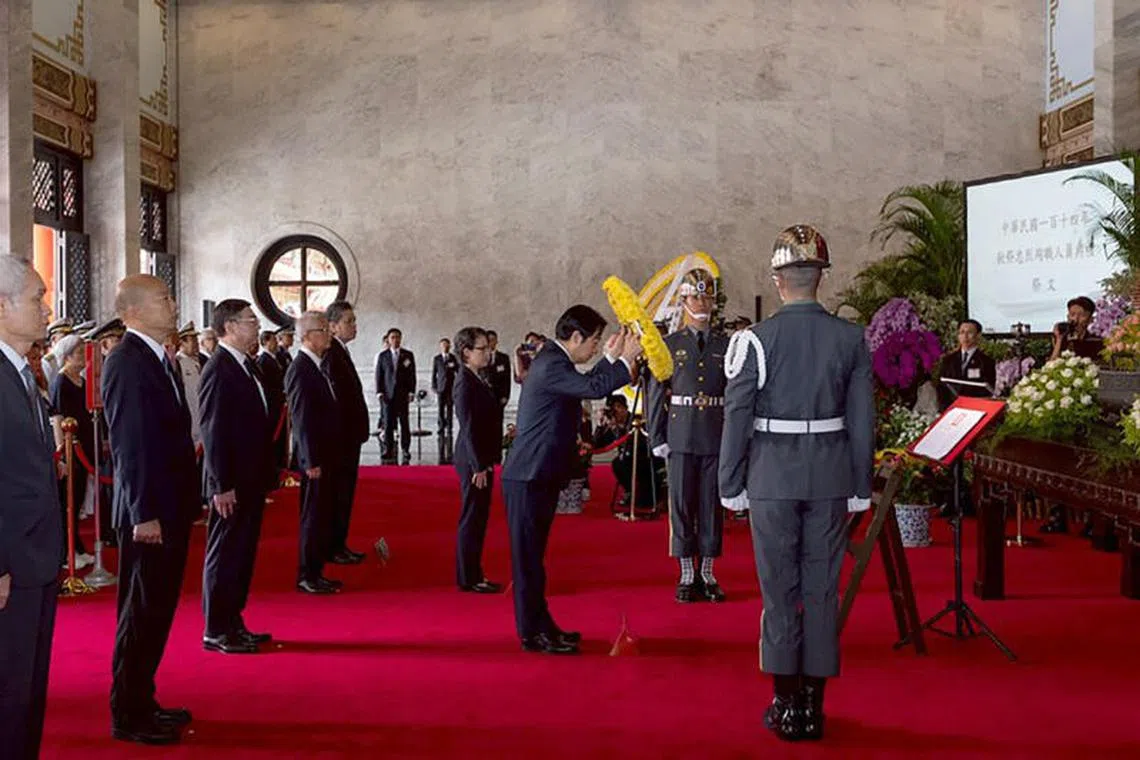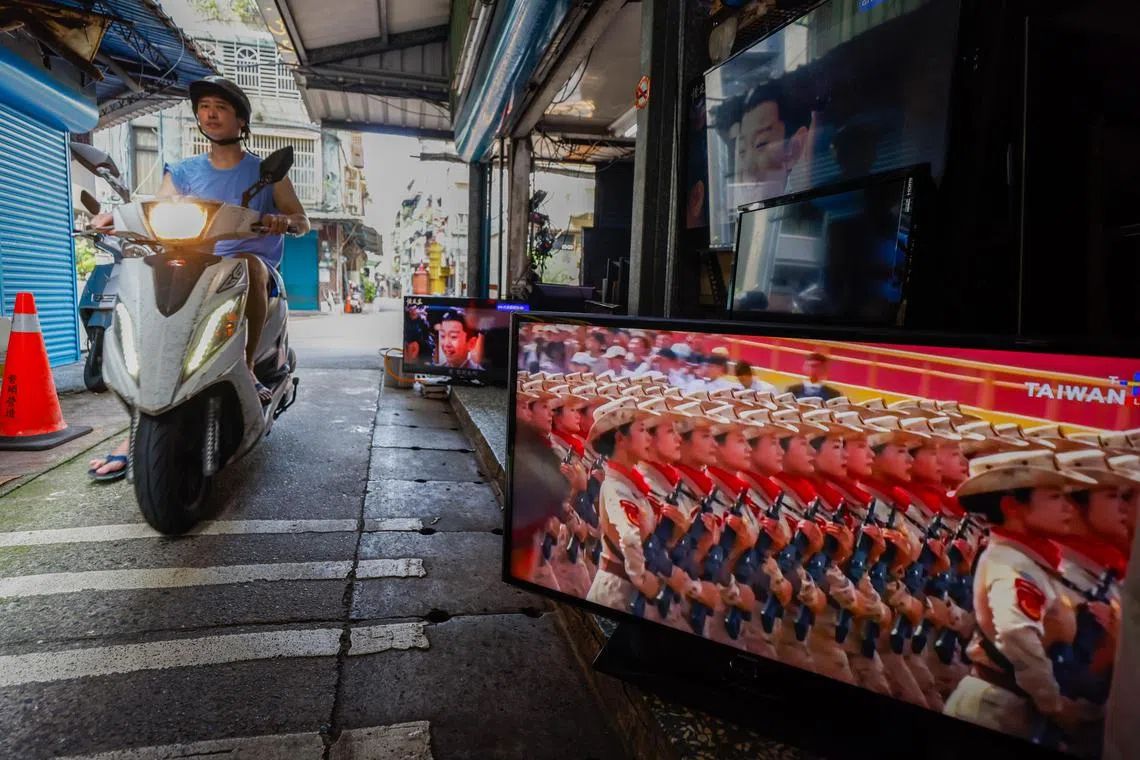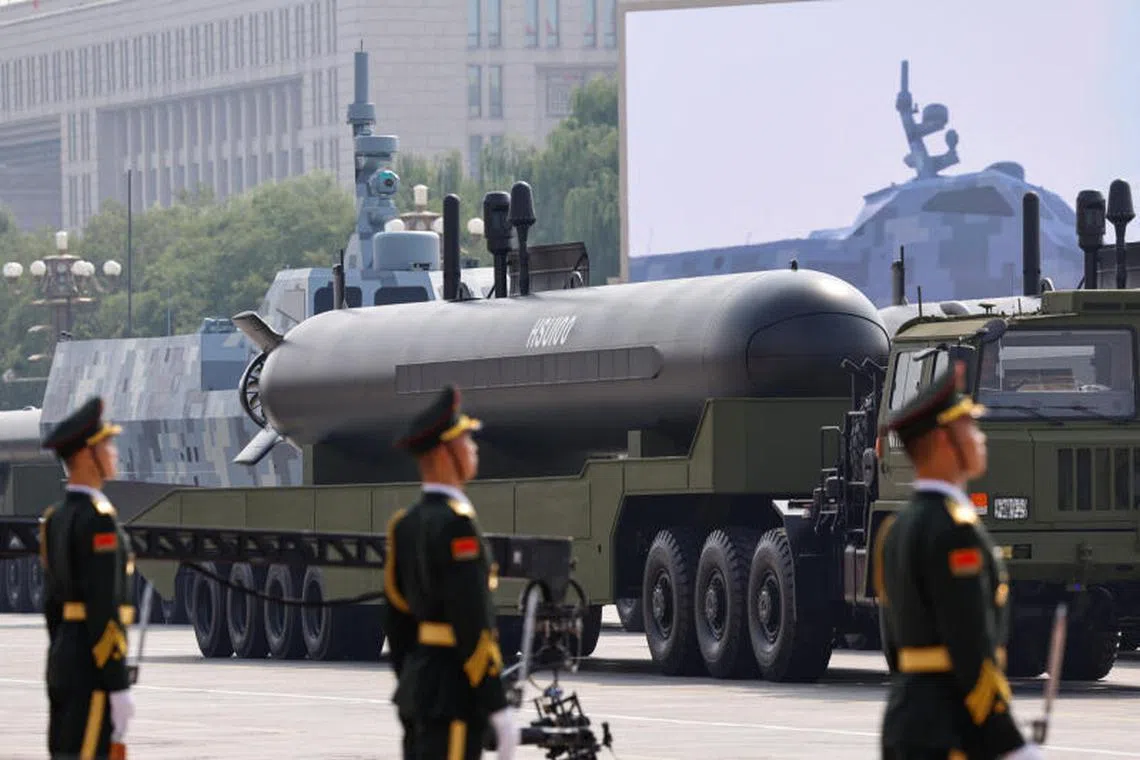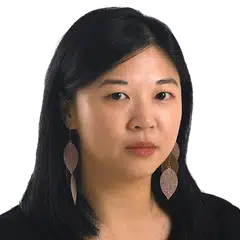Taiwan does not commemorate peace with guns, says Lai as China rolls out grand parade
Sign up now: Get insights on Asia's fast-moving developments

Taiwan President Lai Ching-te laying flowers at the National Revolutionary Martyrs' Shrine in Taipei on Sept 3.
PHOTO: TAIWAN PRESIDENTIAL OFFICE
Follow topic:
TAIPEI – As Beijing rolled out a mighty show of force to mark the 80th anniversary of the end of World War II, the contrast could not have been starker in Taipei, which held a low-key memorial service.
On the morning of Sept 3, it was a picture of remembrance and reflection as Taiwan President Lai Ching-te laid flowers before memorial tablets at the National Revolutionary Martyrs’ Shrine in Taipei, shaking hands with the families of soldiers who died fighting for the Republic of China (ROC), Taiwan’s official name.
“Taiwan does not commemorate peace with guns,” Mr Lai wrote in a Facebook post shortly after the event, adding that instead, the island remembers martyrs and the lessons of history.
“We believe the military hardware in our hands is for the defence of our country and home, not to be used for invasion or expansion,” he said in the post marking Armed Forces Day, which honours fallen service members.
On the other side of the strait, Chinese President Xi Jinping, riding in an open-top limousine
While Mr Lai did not explicitly mention China, the message is widely understood to be directed at Beijing, which has in recent years ramped up military pressure against Taiwan to assert its sovereignty claims over the island.
“I sincerely hope that the countries that once suffered so much from invasion can work together to safeguard peace, pursue freedom and democracy, and become the cornerstone of stability and prosperity,” he added.
He also sought to remind the world of the role of the ROC in the Allied victory in World War II, amid a battle of narratives between Taipei and Beijing over which side should claim credit for it.
Eighty years ago, Mr Lai wrote, it was ROC General Hsu Yung-chang who, alongside representatives of the Allied nations, signed the document formalising the surrender of Japan, which marked the end of World War II.
“They bore witness to the bitter lesson of ‘unity will prevail, aggression will fail’,” he added.
During the war, the Communist Party of China (CPC) and the ROC’s Kuomintang (KMT) forces had put their own civil war on pause to unite against Japan, and when Japan surrendered in 1945, it was to the then KMT-run ROC government.
When the communists took control of the mainland four years later and established the People’s Republic of China (PRC), the KMT fled to Taiwan and established its own government in exile – one that the PRC has never recognised.
In the weeks leading up to China’s parade, Taipei repeatedly accused Beijing of distorting history by emphasising the CPC’s central role in the war as part of an attempt to undermine the legitimacy of the ROC.

A television broadcast in Taipei of the military parade in China on Sept 3.
PHOTO: EPA
“The Chinese communists sought only to expand and consolidate their own power and made no contribution to the war effort,” Taiwan’s Mainland Affairs Council said in a Sept 3 statement.
“No matter how much resources the Chinese communists spend on celebratory events, it cannot obscure the ironclad historical facts.”
Associate Professor Chen Shih-min, a political science analyst at National Taiwan University, agreed and said it was important for Taiwan to get its interpretation of history out there.
“China is trying to deny the existence of the ROC, but the ROC has not ceased to exist,” he said. “The ROC maintains recognition with 12 diplomatic allies, and more than 100 countries recognise its passport.”
Meanwhile, defence analysts closely watched Beijing’s parade for indications of new Chinese military technology that could potentially overwhelm Taiwan.
Something that stood out was the public display of two new giant torpedo-shaped unmanned underwater vehicles, which were transported on long flatbed trucks. These massive submarine-like drones are up to 20m long, and have been compared to Russia’s nuclear-powered Poseidon system.
“It’s impossible to tell if China’s assets are also nuclear-powered. But from Taiwan’s perspective, it’s noteworthy just how large they are, because the larger it is, the farther in distance it can go,” said Mr Thomas Lim, a military technology expert at the S. Rajaratnam School of International Studies.
“That would allow China to launch it from its entire eastern coast, which gives them flexibility and options,” he told The Straits Times.

Members of the People’s Liberation Army standing in front of the HSU100 unmanned underwater vehicle displayed at the military parade.
PHOTO: REUTERS
China also showcased nuclear missiles that can be launched from naval, ground and aerial platforms – its first display demonstrating a full “triad” of nuclear strike capabilities.
In the face of Beijing’s threat – as well as consistent calls by Washington – Mr Lai recently announced that the island would raise its defence spending to 3.32 per cent of its gross domestic product
Despite China’s strong show of military might, Mr Lim added, one should remember that such parades are more performative than anything else.
“The fact that we see new weapons doesn’t mean that all of them are necessarily operational,” he said. “But Taiwan’s biggest priority now is to look at what China has in its inventory and figure out what to do with that.”


